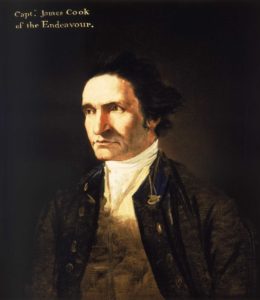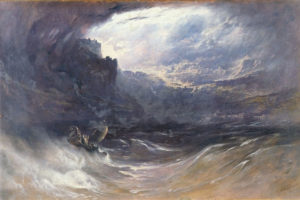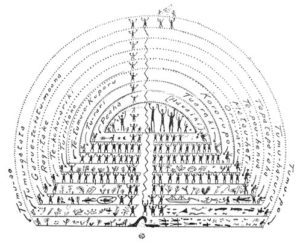BLOG

Marquesan Tattooing
Marquesan tattooing was among the most spectacular practices of the art form in Polynesia. In many Polynesian islands, tattooing was restricted to certain parts of the body—the legs and buttocks, the back, sometimes the face. But in the Marquesas, the

James Cook
While Westerners have tended to see Cook as an Enlightenment hero, Hawaiians and other Polynesians are not crazy about the man, whom they view as a usurper and the leading edge of a wave of cataclysmic change. Indeed, those who live

Breadfruit
Breadfruit, which was a staple of many Polynesian diets, entered European legend in the late eighteenth century as the cargo carried by Captain Bligh of the Bounty when his crew mutinied off the island of Tofua. Bligh was carrying the

Kon Tiki
Thor Heyerdahl’s Kon-Tiki, the story of his amazing 1947 attempt to drift from South America to Polynesia on a balsa-wood raft, was published in Norway in 1948 and translated into English two years later. It sold millions of copies and

Tasman at Tongatapu
This beautiful thing is a page from the ship’s log of the Dutch navigator Abel Tasman—imagine if all our journals looked like this! Tasman is here describing the island of Tongatapu, in the southern reaches of the Tongan archipelago. He

Polynesian Poetry
Between 1852 and 1872, the Reverend William Wyatt Gill worked as a missionary on the island of Mangaia, the most southerly of the Cook Islands. Gill was an energetic collector of traditional Polynesian lore and a great admirer of what he called the

The Flood
Many of the Polynesian flood stories collected in the 19th c. have overtly Christian overtones—only one man and one woman survive, they take their animals with them to higher ground, sometimes they are explicitly being punished. But a few flood

Paiore’s Chart
In 1869, a man named Paiore from the island of Anaa drew this diagram, illustrating the creation of the world. Polynesians did not have a tradition of this kind of illustration and it seems likely that he drew it at

The Puzzling Presence of Dogs
When the Dutch explorers Schouten and LeMaire crossed the Pacific in 1616, they happened upon a number of small islands which they named according to what they found: Vliegen Island, where the landing party returned covered from head to foot with

Imaginary Islands
I love this map because of the way it so confidently depicts a chain of islands that never existed. The Portuguese navigator Quiros believed that islands—or maybe the edge of Terra Australis Incognita—lay just to the south of the routes he

Terra Australis Incognita
This is a map showing what European explorers expected to find in the Pacific: a large unknown continent called Terra Australis Incognita or the Unknown Southland—and sometimes optimistically referred to as Terra Australis Nondum Cognita, the Southland Not Yet Known. The reality of this continent was

The World According to Ptolemy
Ptolemaic maps from the fifteenth century, do not even include the Pacific—what Cook would later call “the fourth part” of the globe. Their focus is on the known, inhabited regions of the world, which means, at this stage of history,